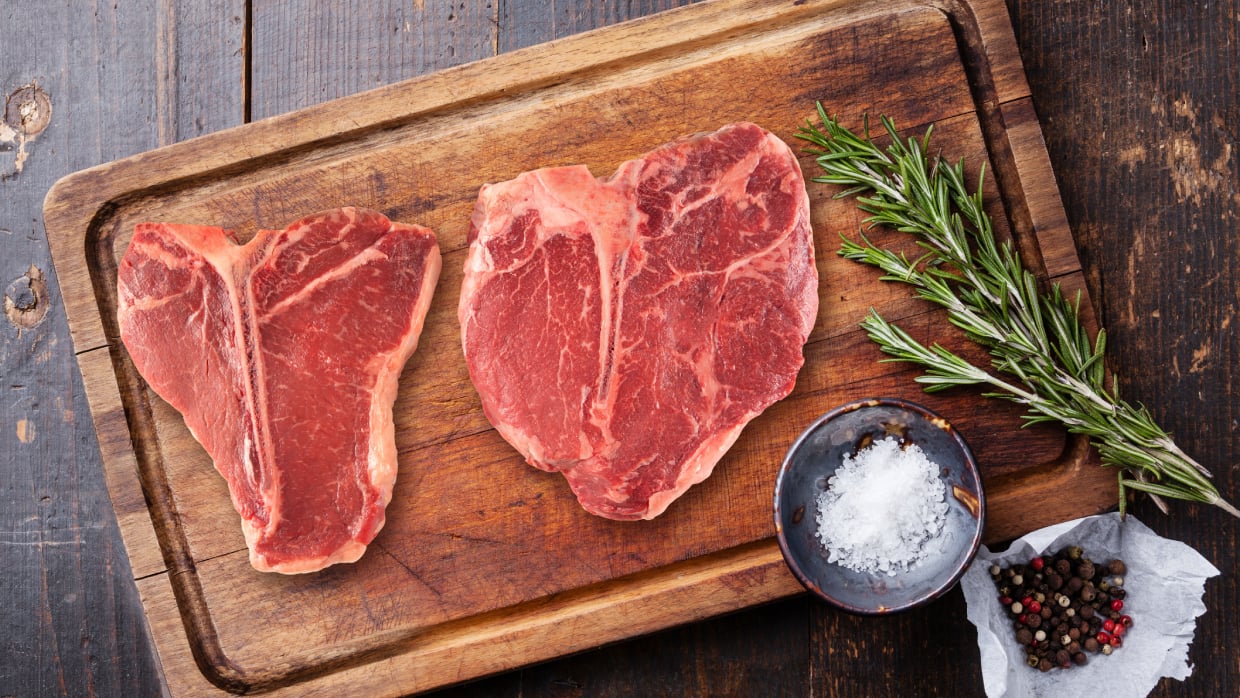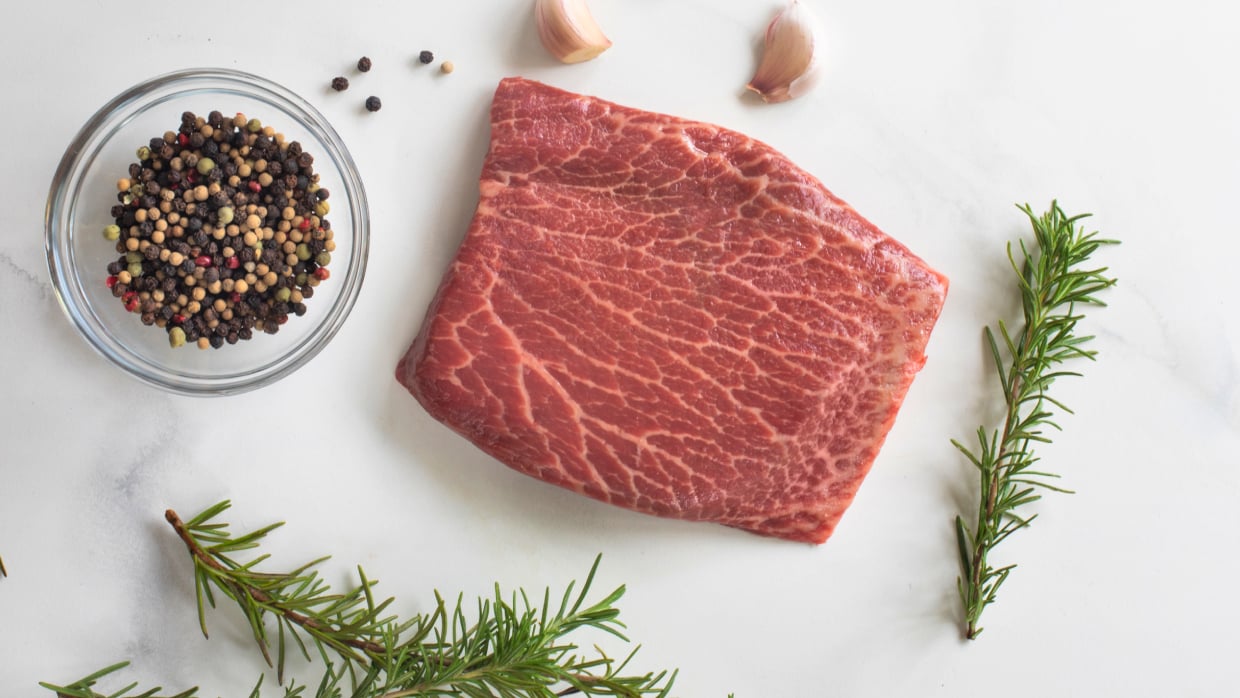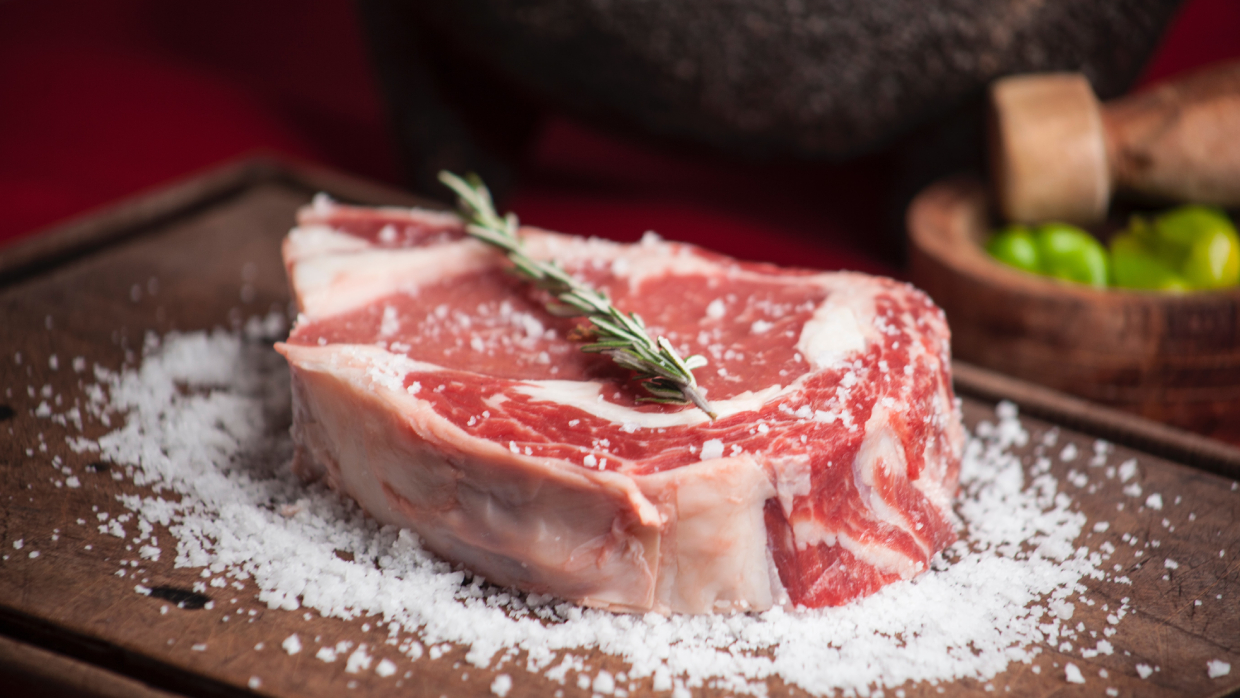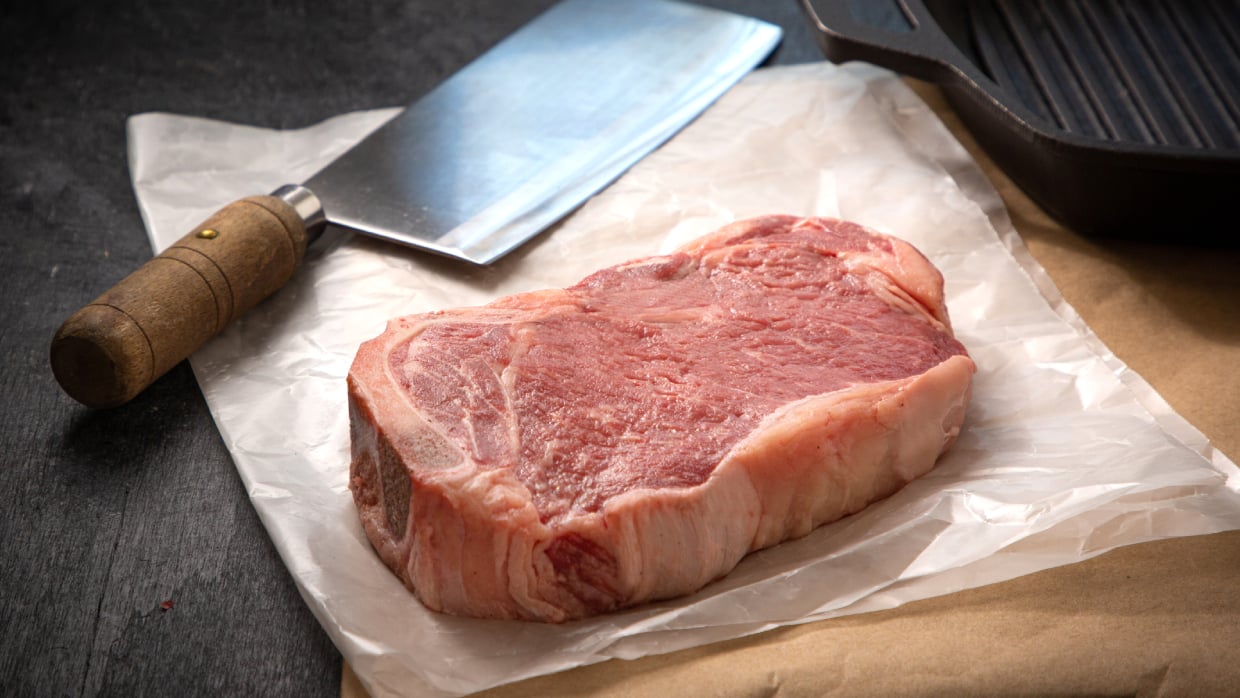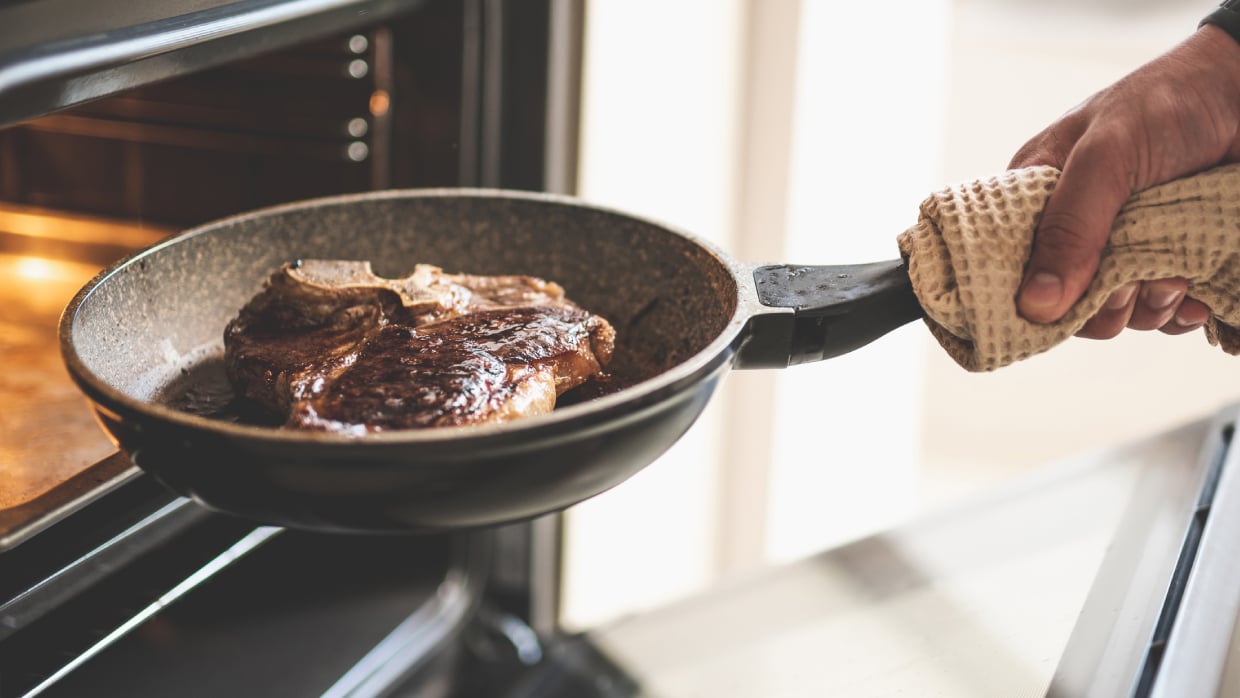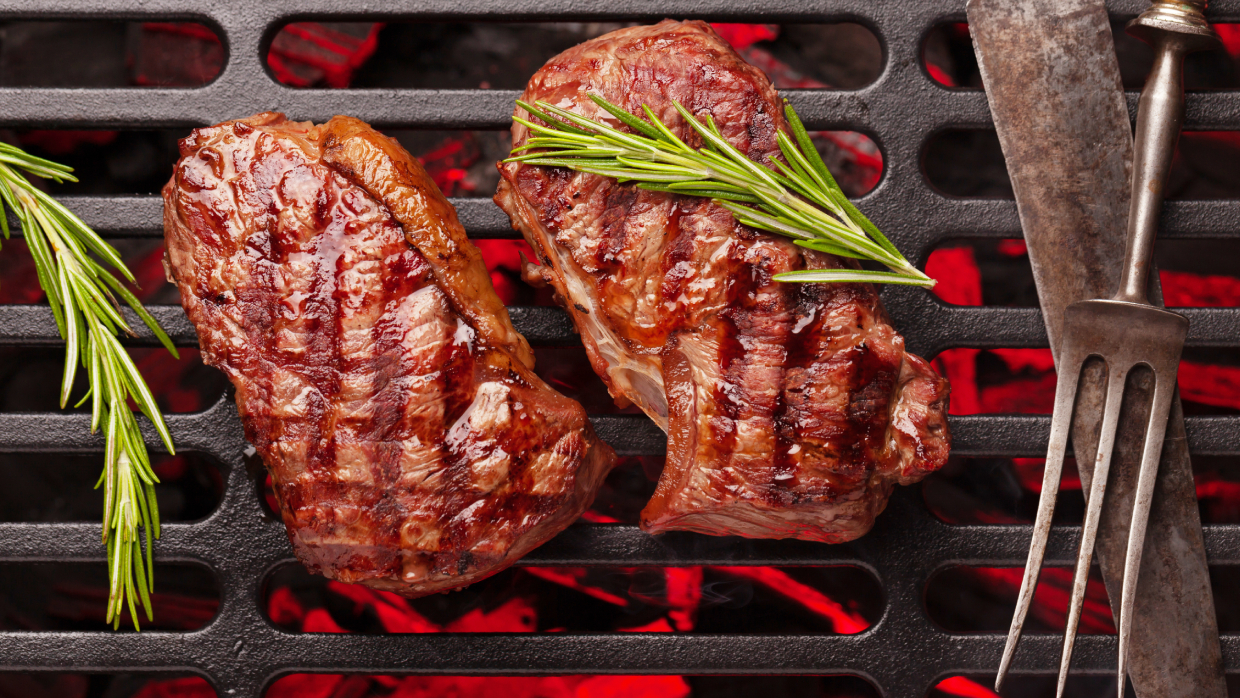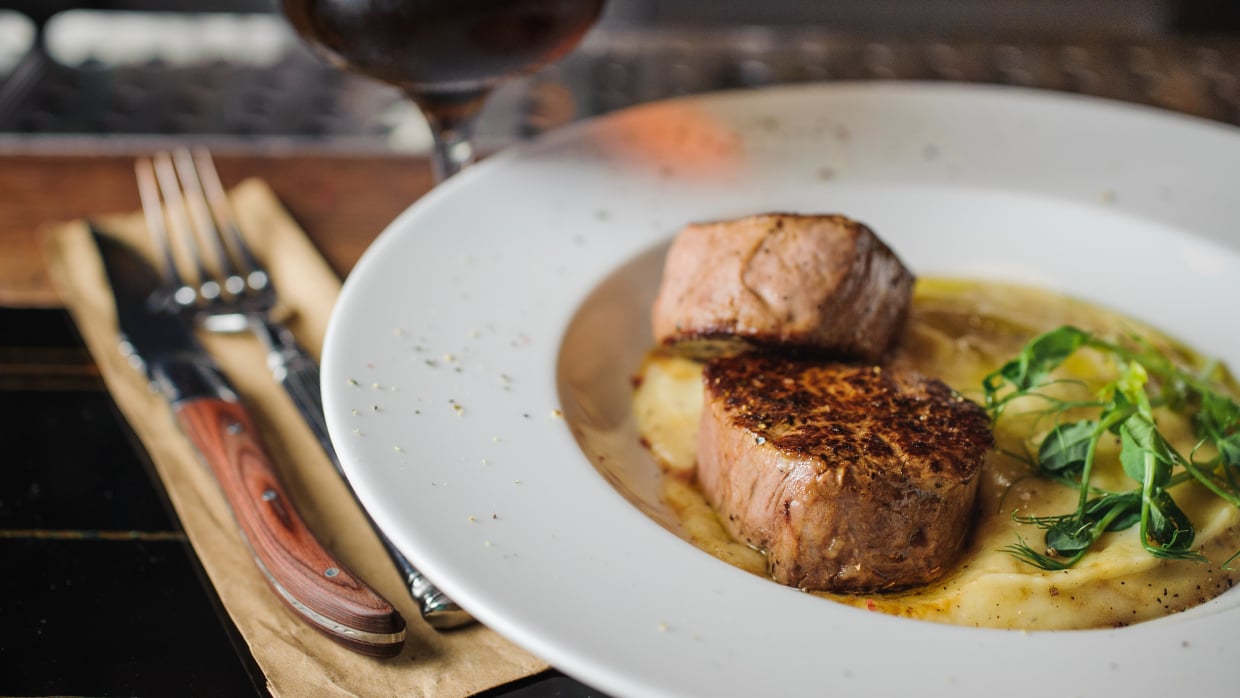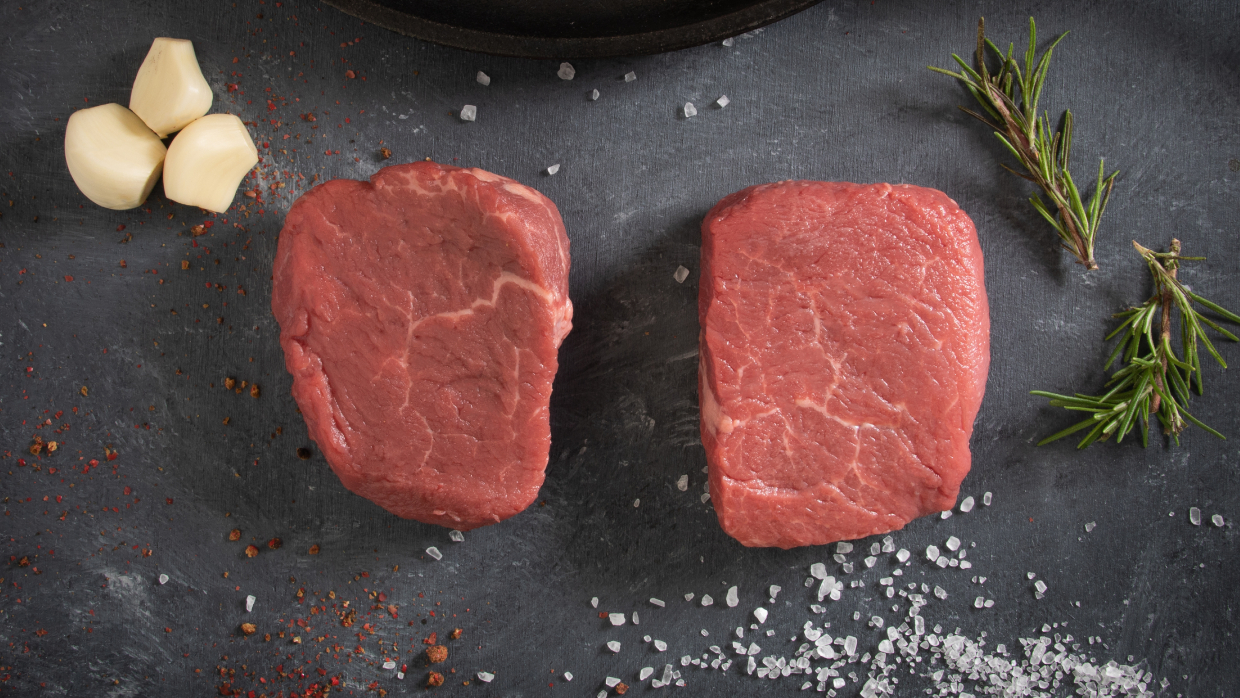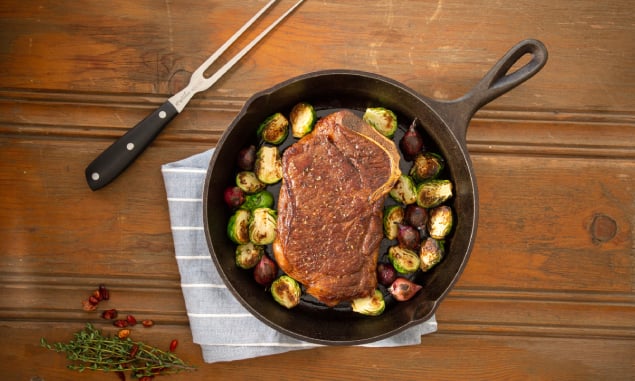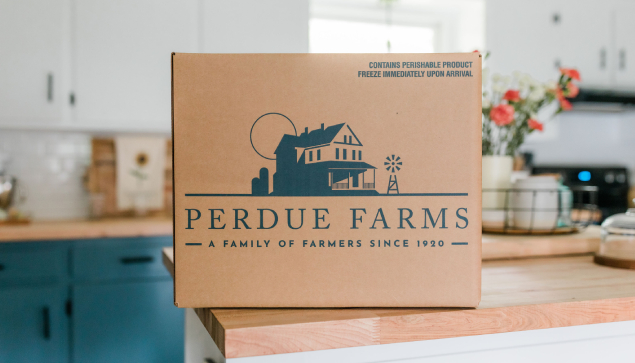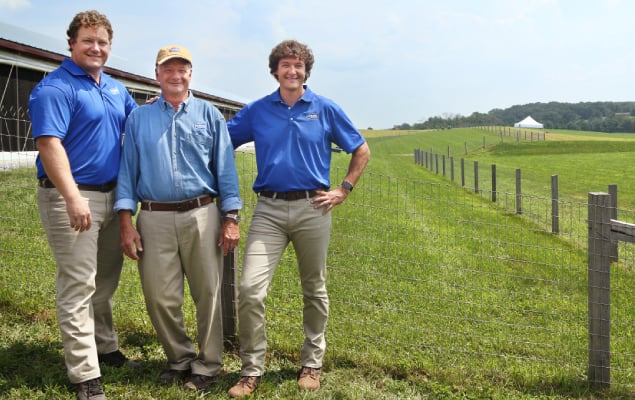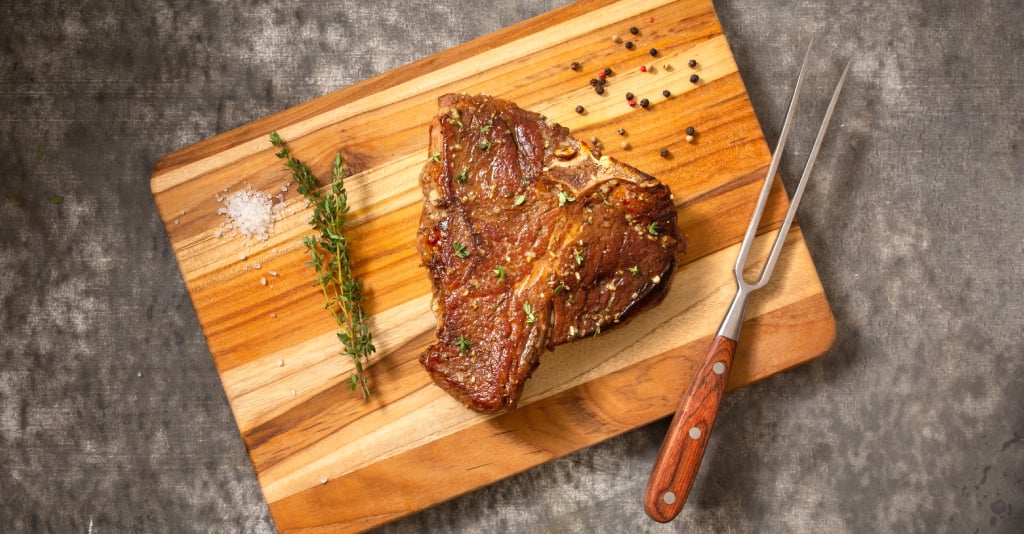
BEST WAY TO COOK STEAK
When it comes to special occasions and romantic dinners at home, nothing quite compares to thick, juicy and perfectly cooked steak. Here, Perdue Farms’ culinary team shares tips and tricks for cooking the best steak you’ve ever tasted. Learn the best way to cook steak, from searing (and reverse searing) and oven roasting to checking for doneness and serving up your premium cut of beef in steakhouse style!
New York Strip Steak
Where It Comes From: New York strip comes from the strip loin, which is located in the hind quarter and runs close to the tenderloin.
Attributes: Strips are known for their flavor, thickness and fat cap, which results in a juicy and buttery consistency. Note: Choose our bone-in version for optimal flavor and a great presentation.
Sirloin Steak
Where It Comes From: The sirloin is located toward the rear of the animal, above the tenderloin.
Attributes: Well marbled with beefy flavor and a great bite, this cut is best when cooked rare to medium.
Tenderloin Filet
Where It Comes From: The tenderloin filet comes from the center of the back.
Attributes: This cut is lean, yet tender, as it comes from an underutilized muscle group. The buttery, juicy mouthfeel and flavor is beyond compare.
Filet Mignon
Where It Comes From: Filet mignon comes from the center of the back. The tenderloin is under the ribs, along the backbone. This muscle does very little work, so the cut is very tender.
Attributes: The most sought-after cut, filet is tender and flavorful and boasts a melt-in-your-mouth buttery texture.
Filet Tips
Where It Comes From: Tips come from the tail end of the tenderloin.
Attributes: Tips are very tender and packed with flavor. Easy to cook and versatile, tips can be seasoned and quick seared for stir-fry or slow cooked in stews and stroganoff.
Ribeye
Where It Comes From: Ribeye comes from the rib section. This cut is composed of two muscles, separated in the center by fat.
Attributes: This steak, a favorite among steak connoisseurs, boasts the most marbling of any cut, which results in superior moisture and flavor. Ribeye is related to prime rib, which refers to the entire rib roast.
Porterhouse vs. T-Bone
Where They Come From: These cuts come from the spine area.
Attributes: Both are considered dual cuts of meat, with a New York strip on one side of the bone and a tenderloin on the other. The tenderloin of the T-bone is slightly smaller than that of the Porterhouse, because the latter is located closer to the short loin. These sought-after cuts, which offer the best of both worlds (a tender, buttery filet and a flavorful, meaty strip), are lean yet well marbled and designed to feed two.
Flat Iron
Where It Comes From: The flat iron comes from the shoulder area.
Attributes: The butcher’s best kept secret! This cut, previously known as the butler steak or the oyster blade steak, is gaining in popularity as consumers discover its versality. Second in tenderness to filet mignon, the flat iron, thanks to extra hemoglobin, is packed with flavor. The cut must be quickly seared or grilled (rare, mid rare or medium – no longer!) and cut against the grain in thin slices to ensure tenderness.
Stew Meat and Steak Strips
Where It Comes From: Stew meat is sourced from both sirloin (rear back portion) and round (rear leg). Strips come from top sirloin, the most prized cut of the sirloin area.
Attributes: Stew meat should be seared quickly to brown the outside, which enhances flavor and preserves the shape, then cooked low and slow to tenderize. Strips are both tender and flavorful and require only a quick sear.
The age-old question: Is bone-in steak more flavorful than boneless? Some say, yes, the marrow from the bone infuses meat with a savory “umami” flavor, while others swear they can’t tell the difference. Our advice? Order both here at Perduefarms.com and see for yourself!
There are a few benefits to cooking steak with the bone left in: Meat attached to bone is less likely to shrink and, as a result, less likely to release juices. And the key to a perfectly cooked steak is retaining as much moisture as possible.
It's best to plan ahead. One to two days before you plan to cook steak, move the vacuum-sealed package(s) from the freezer to the refrigerator and let thaw. Note: Keep steak(s) wrapped in original packaging and place on a plate. Then follow instructions below for bringing steak up to temperature.
To quickly thaw a steak, remove frozen steak from freezer and place on a metal surface. Why? Metal will absorb thermal units from the frozen item, helping to speed up the defrosting process. Keep steak in its original packaging and flip a few times. Thaw until steak is frosty and pliable; place steak in refrigerator to finish the thawing process.
Bringing Steak to Room Temperature
For the best steak experience, we recommend that steak rest at room temperature for one to two hours (no longer, for food safety reasons) before being cooked. Here’s why.
A cold 35 F steak will:
- Rob the pan of heat; a cold pan means a so-so sear on the outside or may trigger a boiling process. A good sear helps to retain juices.
- Will take a longer time to cook, which means an increased risk of oversearing as steak continues to cook so the interior reaches a medium rare or higher temperature.
What is Carry Over Cooking?
- A piece of meat will continue to cook even after it’s removed from the heat source. The internal temperature of a 1-inch-thick steak, for instance, may rise as much as 5 degrees as it rests. Carry over cooking time should be taken into consideration when monitoring temperature with a digital thermometer. Always remove a steak from the heat when it reaches a temperature that is 5 degrees below the desired level of doneness.
- The amount of time steak should rest is equal to the amount of time necessary for steak to come up to temperature. A small steak may take 5 to 10 minutes to cook another 5 degrees as it rests.
We think a good old-fashioned cast iron pan is the best pan for steak, as it maintains a consistent temperature throughout the cooking process. Pans made from other materials, such as stainless steel, may cool down in the spot where the steak is placed, which will inhibit a proper sear.
Stovetop Method
- Preheat oven to 400 F.
- Pat steaks dry.
- Preheat pan on medium-high stovetop to 450 F. Then add 1 to 2 tablespoons of oil (or enough to lightly coat the bottom of the pan).
- Place steak in skillet and sear for 2 to 3 minutes on each side.
- Place steak-filled skillet in oven and cook for 4 to 10 minutes, checking internal temperature for desired doneness as steak cooks.
Oven Method
- Place cast iron pan in the middle rack of the oven. Preheat oven to 500 F. Let pan heat up for 30 minutes to one hour.
- Pat steaks dry. Pull rack out of oven, add 1 to 2 tablespoons of oil to pan, place steaks in pan and replace rack. Close oven door and drop oven temperature to 425 F.
- Let steaks sear for 3 to 4 minutes or so on each side. Continue to cook for 4 to 10 minutes, checking internal temperature for desired doneness.
We recommend this technique for the finest cuts of beef, such as New York strip steaks and ribeyes. Reverse searing beef gives you more control over the cooking process and lessens risk of oversearing. Here’s how to do it.
- Preheat oven to 250 to 300 F.
- Pat steaks dry. Spray a baking sheet with cooking spray. Place steaks on tray and place tray in the middle rack of the oven.
- Cook steak until a digital meat thermometer, inserted in the thickest portion of steak, registers 120 F.
- Remove steaks from oven and pat dry; set aside.
- Place cast iron pan on stovetop over medium-high heat and heat to 400 to 450 F.
- Place 1 tablespoon of grapeseed oil in pan and swirl. Pan is hot enough if oil smokes. Place steaks in the hot pan and sear for approximately 2 minutes per side. Optional: Add a pat or two of butter to pan and spoon over steaks as they sear.
- For best results preheat grill to 450 F, with one side of the grill off, or with no coals underneath. This creates one side of direct/high heat for searing or cooking through thin cuts of meat, and an indirect/cooler side for finishing thicker cuts without burning or over-charring the meat.
- While the grill is preheating, let steak rest at room temperature. Once the grill is up to temperature, pat the steaks dry and season.
- Lightly oil grill grates with an oil-coated rag.
- Place the seasoned steaks over the direct-heat side of the grill. Sear for 2 to 3 minutes before doing a quarter/45-degree turn. Cook an additional 2 to 3 minutes before flipping.
- For thin steaks, continue cooking over direct heat, giving another quarter turn after 2 to 3 minutes.
- For thick steaks, place over indirect heat when you flip, close the lid, and open again within 3 to 6 minutes to give steak a quarter turn.
- Once the steak is about 5 degrees below the final desired internal temperature, remove from the grill, and let rest for 5 to 10 minutes before slicing.
Our steaks are so juicy and delicious that you need little more than a pat of butter to bring out the exceptional flavor. An added benefit: Butter, as it melts, will seep into the surface pores of steak, helping to seal in juices.
For weeknight and weekends, consider a demi-glace. To make, deglaze the pan in which you cooked steaks with either beef stock or red wine to lift off the crust (or fond) left in the pan. Slowly simmer to reduce by half, then add butter to emulsify.
For special occasions, consider butter-based sauces, such as hollandaise, béarnaise and beurre blanc.
Side Dishes to Serve With Steak
- Mashed or roasted potatoes
- Charred asparagus or Brussels sprouts
- Butternut squash puree
- Smoked cheddar grits
Our selection of beef, which includes USDA prime and choice as well as grass-fed and grass-finished cuts, is brought to you by Niman Ranch and Panorama Organic Grass-Fed Meats, two Perdue Farms brands that work with their own networks of U.S. family farmers and ranchers. Steaks are hand trimmed, frozen at the peak of freshness and wrapped in vacuum-sealed packages to lock in freshness and protect beef from freezer burn.
Niman Ranch Beef
The Niman Ranch network of more than 750 small, independent U.S. family farmers and ranchers adhere to some of the strictest animal welfare protocols in the industry to produce the finest tasting beef available.
- Niman Ranch steaks are aged for at least 21 days to ensure exceptional flavor and tender texture.
- Steaks are served in the country's finest restaurants
- All Niman Ranch Cattle are:
- 100% Pure Angus, Attesting to the Breed’s Notable Flavor and Consistently First-Rate Quality.
- Only Fed a 100% Vegetarian Diet
- Never Given Hormones or Antibiotics – EVER
- Certified Humane
- Bred, Born, Raised and Processed in the U.S.
Panorama Organic Grass-Fed Meats
Panorama is the nation’s largest producer of 100 percent grass-fed and grass-finished organic beef. Cattle is raised humanely by U.S. family ranchers across nine western and mid-western states.
- USDA Certified Organic Beef
- 100% Grass Fed and Grass Finished
- Global Animal Partnership Certified Step 4: Pasture Raised
- Aged for up to 30 Days for Optimal Flavor and Tenderness
- No Added Hormones or Antibiotics — Ever
- Born and Raised in the USA®
- Certified Paleo and Paleo Approved
- Whole 30 Approved
Note: Grass-fed and grass-finished beef has a distinct beefy flavor and is leaner than grain-fed beef. It therefore cooks faster; monitor steak closely when cooking for doneness.
